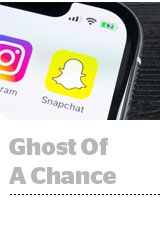 Snapchat took a short-term revenue hit last year when it pivoted from its original direct branding business to a self-serve ad platform.
Snapchat took a short-term revenue hit last year when it pivoted from its original direct branding business to a self-serve ad platform.
But the low inventory prices and data and user-tracking features that have accompanied Snapchat’s programmatic transition are making the company more competitive with Facebook and Instagram. Snapchat’s improved measurability come as Facebook’s platform grows opaquer and user data policy changes make it harder for advertisers to run Facebook attribution.
Snapchat recently came out of beta with a measurement pixel, for instance, that improves attribution and allows Snapchat to report on metrics like return on ad spend, as the Facebook platform does. At the same time, Facebook attribution is becoming more difficult due to recent policy changes restricting user data following privacy controversies.
Snapchat’s new measurement features have attracted the kind of direct-to-consumer ecommerce marketers that are bread and butter for Facebook and Instagram, and the growth and diversity of advertisers on the platform is improving the overall health of Snapchat’s auction, said Radhika Kakkar, VP of global online sales.
Online retailers like the TechStyle Fashion Group have seen the benefits. TechStyle started running Snapchat ads in 2016 and increased its spend late last year after Snapchat’s CPMs came down and its attribution analytics improved, said Laura Joukovski, TechStyle’s chief media officer.
TechStyle had a few months of surging Snapchat returns, which have since plateaued as more ecommerce brands advertise on Snapchat, creating more competition for inventory, she said.
But Joukovski isn’t worried about the loss of value as ad prices go back up.
If the site pixel seems familiar, it’s because it’s an innovation straight from Facebook’s playbook. While Facebook has developed a reputation for copying Snapchat features like augmented reality overlays, many of Snapchat’s offerings were first developed by Facebook – like a mobile measurement partner program and custom lookalike audiences.
“It’s tough to compare Facebook and Snapchat pixels one to one because Facebook is a juggernaut, but Snapchat is getting a lot better,” said Ryan Fiore, marketing VP of the men’s grooming startup Manscaped.
Joukovski said the Facebook pixel, which enables attribution and targeting across its platform, provides more data and has established a high level of comfort with brands for its targeting and results.
“But Snapchat has been working hard on their pixel and we’re starting to connect the dots between ad exposures and someone who comes to our site and completes conversions in different windows,” she said.
The Facebook platform still has a lower cost per subscriber for TechStyle than Snapchat does, but that metric is converging as Facebook rates go up and as Snapchat improves its targeting algorithms, Joukovski said.
The ecommerce skincare brand MDacne advertised primarily on Facebook and Instagram before trying Snapchat as a direct-response channel in May, said CEO Oded Harth.
And Snapchat is already more than 50% of MDacne’s paid media mix, Harth said, since it now has strong performance marketing features and Facebook and Instagram’s climbing CPMs make Snapchat’s cost per install more attractive.
And for brands with narrowly defined audiences, even Facebook and Instagram can only scale so far.
Facebook and Instagram have been as steady as a rent check for direct-to-consumer brands, Fiore said, but even there eventually brands with narrow targeting parameters run out of scale because there’s a finite audience for targeting.
Kakkar said Snapchat has found success with many new ecommerce brands because a significant chunk of its audience – and younger users in particular – are less likely to be on Facebook.
Facebook-owned properties still receive a majority of Manscaped’s marketing budget, but Snapchat is growing its share of the pie, Fiore said, as Manscaped shifts from running Snapchat tests to treating the platform as a true, always-on performance channel.
The Facebook logjam
Snapchat may be taking baby steps with its measurement and attribution, but Facebook attribution has taken a step backward with the removal of log-level campaign reporting and user data restrictions for policy changes following recent data privacy scandals.
TechStyle must adjust its Facebook campaigns without log-file level data analytics, Joukovski said, removing a critical advantage the platform had over Snapchat, which has never returned log-level data.
Without log file data, she said, TechStyle won’t be able to connect as many conversions to Facebook campaigns, so the average cost per subscriber will increase.
“Snapchat is only so scalable” and its analytics are still improving, Fiore said. “But it’s returning more performance data when other platforms we use are returning less.”













